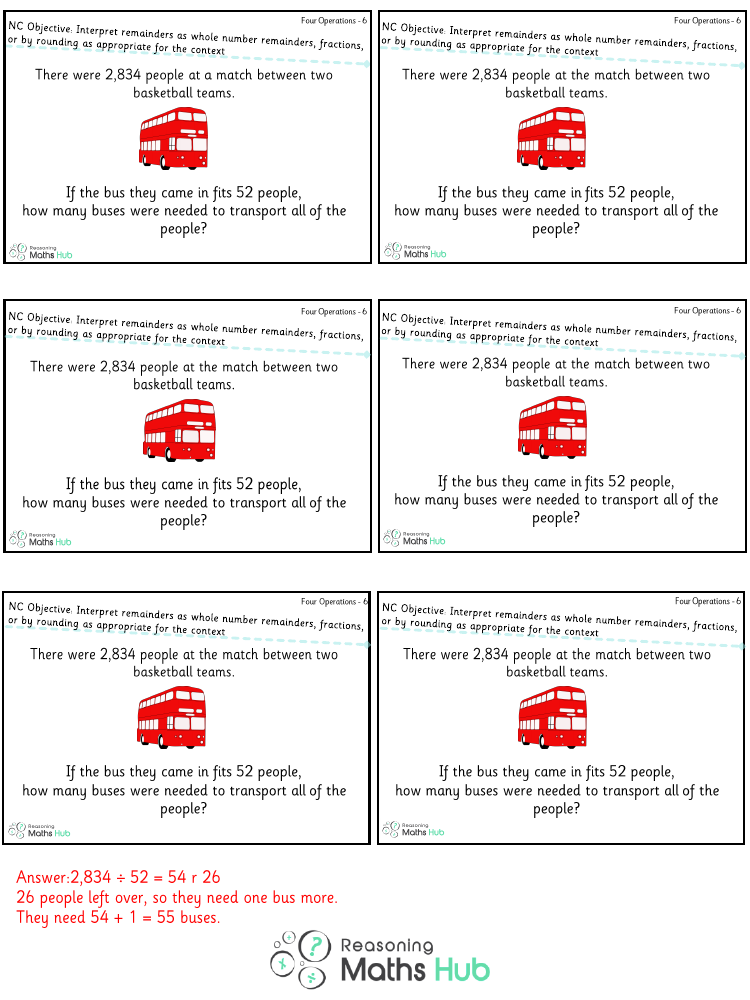Remainders as whole number remainders, fractions, or by rounding as appropriate for the context 3 - Reasoning

Maths Resource Description
The concept of remainders is an essential part of the mathematical understanding of division. When dividing whole numbers, the result may not always be a whole number itself, and this is where remainders come into play. Teaching students to interpret remainders in different ways is crucial for their ability to apply division in various contexts. Remainders can be expressed as whole number remainders, as fractions, or they can be rounded to the nearest whole number, depending on what is most suitable for the situation at hand. For instance, when dividing a set of items among a number of people, the remainder could represent the items that don't fit evenly into the groups.
In reasoning tasks, students are encouraged to think critically about how to handle remainders. They must decide whether it makes more sense to keep the remainder as a whole number, convert it into a fraction that represents the part of the whole, or round the division result to an approximate whole number. This decision-making process requires an understanding of the context. For example, if the context involves measuring ingredients for a recipe, a fractional remainder might be more appropriate, whereas in a scenario where you're counting people, rounding up or down would be more practical. Developing the skill to reason with remainders prepares students for real-life applications of division where precision and context are key.